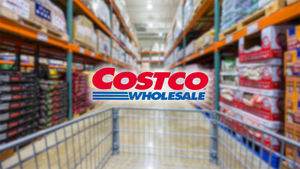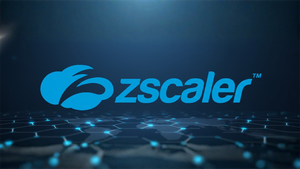- Results from open-label extension period of the Phase 2 trial demonstrate that longer-term treatment with povorcitinib 75 mg resulted in sustained and durable efficacy across all treatment arms
- Data featured as an oral presentation at the European Hidradenitis Suppurativa Foundation conference
- Hidradenitis suppurativa (HS) is a chronic and debilitating inflammatory skin condition characterized by painful nodules and abscesses that can lead to irreversible tissue destruction and scarring1
Incyte (Nasdaq:INCY) today announced new 52-week results from a Phase 2 study evaluating the efficacy and safety of povorcitinib (formerly INCB54707), an oral JAK1 inhibitor, in adult patients with hidradenitis suppurativa (HS). These data were presented as an oral presentation (Abstract #258) at the 12th Conference of the European Hidradenitis Suppurativa Foundation, held from February 8-10, 2023, in Florence, Italy.
The study previously met its primary endpoint, demonstrating that at Week 16 – the double-blind, placebo-controlled portion of the study – patients receiving povorcitinib once daily (QD) had significantly greater decreases from baseline in Abscess and Inflammatory Nodule (AN) count versus placebo (least squares mean change, −2.5 [0.9], placebo vs. −5.2 [0.9], P=0.0277, povorcitinib 15 mg; −6.9 [0.9], P=0.0006, povorcitinib 45 mg; −6.3 [0.9], P=0.0021), povorcitinib 75 mg)2.
New results at Week 52, which include the 36-week open-label extension period during which all patients received povorcitinib 75 mg once daily (QD), show that average efficacy was sustained for all treatment arms following the switch to povorcitinib 75 mg QD (mean change in AN count from Day 1 baseline at Week 52 was −5.7 [7.3], placebo→75 mg; −8.4 [5.6], 15→75 mg; −10.4 [14.6], 45→75 mg; and −5.4 [5.6], 75 mg). Importantly, povorcitinib also demonstrated durable efficacy at Week 52 in high-threshold outcomes, as evidenced by 22-29% of patients achieving HS Clinical Response 100 (HiSCR100), which is defined as a 100% reduction from baseline in total AN count with no increase from baseline in abscess or draining tunnel count.
Povorcitinib was generally well tolerated and the safety profile was consistent with previously-reported data. The most common treatment-emergent adverse events (TEAEs) at Week 52 (n=174) were COVID-19 (21.3%), acne (11.5%), upper respiratory tract infection (10.9%), headache (5.7%), nasopharyngitis (5.7%), urinary tract infection (5.7%) and increased blood creatine kinase (CK) (5.2%). In total, six patients (3.4%) experienced a TEAE that led to treatment discontinuation. No fatal TEAEs were observed.
“HS is a chronic, progressive and debilitating condition for which there is no cure. We are encouraged by these Phase 2 data and believe they reinforce the potential of povorcitinib to be a safe and efficacious treatment for HS that is tolerable with longer-term administration, even at the higher doses,” said Kurt Brown, M.D., Global Program Head, Povorcitinib, and Associate Vice President, Drug Development, Inflammation & AutoImmunity, Incyte. “Despite the available treatments for HS, no uniformly-effective therapy has been found, underscoring the need for additional options. We look forward to continuing to progress the development of povorcitinib through our ongoing Phase 3 trial in patients with moderate-to-severe HS.”
Additional 52-week efficacy results include:
|
Placebo → Povorcitinib 75 mg arm |
Povorcitinib 15 → 75 mg arm
|
Povorcitinib 45 → 75 mg arm
|
Povorcitinib 75 mg arm
|
|
(Patients, %) |
(Patients, %) |
(Patients, %) |
(Patients, %) |
HiSCR |
59.3 |
64.7 |
66.7 |
61.3 |
HiSCR75 |
40.7 |
50.0 |
50.0 |
51.6 |
HiSCR90 |
25.9 |
35.3 |
33.3 |
32.3 |
HiSCR100 |
22.2 |
29.4 |
23.3 |
29.0 |
|
(Patients, %) |
(Patients, %) |
(Patients, %) |
(Patients, %) |
ISH4-55 |
59.3 |
73.5 |
76.7 |
61.3 |
ISH4-75 |
51.9 |
55.9 |
60.0 |
45.2 |
ISH4-90 |
37.0 |
35.3 |
30.0 |
32.3 |
ISH4-100 |
22.2 |
29.4 |
20.0 |
25.8 |
HiSCR, HS Clinical Response – ≥50% reduction from baseline in AN count with no increase in the number of abscesses or draining tunnels; HiSCR75/90/100, ≥75%, ≥90%, and 100% reduction from baseline in AN count with no increase in the number of abscesses or draining tunnels; ISH4, International Hidradenitis Suppurativa Severity Score System; IHS455/75/90/100, ≥55%/75%/90%/100% reduction from baseline in IHS4 score. |
||||
“Given the nature of HS, which presents with persistent, painful nodules and abscesses, this immune-mediated skin condition often has a severe impact on a patient’s quality of life,” said Joslyn Kirby, M.D., M.S., M.Ed., Associate Professor and Vice Chair for Education, Department of Dermatology at Penn State Health. “I am encouraged by these promising results suggesting that povorcitinib may be a favorable oral treatment option that could provide substantial relief from common HS symptoms for patients.”
This presentation will be made available for registered participants on the EHSF website at https://www.eventclass.org/contxt_ehsf2023/scientific/online-program/session?s=S-09#e268 and can be accessed until August 31, 2023.
About Hidradenitis Suppurativa
Hidradenitis suppurativa (HS) is a chronic inflammatory skin condition characterized by painful nodules and abscesses that can lead to irreversible tissue destruction and scarring.1 Over-activity of the JAK/STAT signaling pathway is believed to drive inflammation involved in the pathogenesis and progression of HS3. More than 150,000 patients in the U.S. are estimated to have moderate to severe HS4. Given the debilitating nature of condition, it can have a profoundly negative effect on patients’ quality of life5.
About the Phase 2 Study (NCT04476043)
This Phase 2, randomized, double-blind, placebo-controlled, dose-ranging study is evaluating the efficacy and safety of povorcitinib (formerly INCB54707) in adult patients with hidradenitis suppurativa (HS).
The first part of the study spanned 16 weeks and enrolled 209 adults (aged 18-75 years) who were randomized 1:1:1:1 to povorcitinib 15 mg once daily (QD; n=52), 45 mg QD (n=52), 75 mg QD (n=53) or placebo (n=52). Eligible patients had an HS (Hurley stage I, II or III) disease duration of ≥3 months prior to screening, and active HS in at least two distinct anatomical areas. The primary efficacy endpoint is mean change from baseline in Abscess and Inflammatory Nodule (AN) count at Week 16. The key secondary endpoint is percentage of patients achieving HS Clinical Response (HiSCR; ≥50% reduction from baseline in AN count with no increase in number of abscesses or draining tunnels) at Week 16.
The second part of the study, the open-label extension (OLE) period, spanned an additional 36 weeks (52 weeks total) and included patients enrolled in the first part of the study. All OLE patient participants (n=174) received treatment with povorcitinib 75 mg QD. After Week 52, patients who completed baseline, Week 16 and Week 52 assessments could continue to receive open-label treatment with povorcitinib 75 mg QD for an additional 48 weeks.
Endpoints at Week 52 include mean change from baseline in AN count, HiSCR and HiSCR75/90/100 (≥75%/90%/100% reduction from baseline in AN count with no increase in the number of abscesses or draining tunnels), HS flare occurrence, mean change from baseline in International Hidradenitis Suppurativa Severity Score System (IHS4) and IHS455/75/90/100 (≥55%/75%/90%/100% reduction from baseline in IHS4 score). Safety of povorcitinib was assessed by the frequency and severity of treatment-emergent adverse events (TEAEs).
For more information about this Phase 2 study, please visit https://clinicaltrials.gov/ct2/show/NCT04476043.
About Povorcitinib (INCB54707)
Povorcitinib (INCB54707) is an oral small-molecule JAK1 inhibitor currently in Phase 2 clinical trials for hidradenitis suppurativa (HS), vitiligo and prurigo nodularis. A Phase 3 study in HS is also ongoing.
About Incyte
Incyte is a Wilmington, Delaware-based, global biopharmaceutical company focused on finding solutions for serious unmet medical needs through the discovery, development and commercialization of proprietary therapeutics. For additional information on Incyte, please visit Incyte.com and follow @Incyte.
Forward-Looking Statements
Except for the historical information set forth herein, the matters set forth in this press release, including statements regarding the presentation of data from Incyte’s clinical development pipeline, whether or when povorcitinib will be approved or commercially available for use in humans anywhere in the world and Incyte’s goal of improving the lives of patients, contain predictions, estimates and other forward-looking statements.
These forward-looking statements are based on Incyte’s current expectations and subject to risks and uncertainties that may cause actual results to differ materially, including unanticipated developments in and risks related to: unanticipated delays; further research and development and the results of clinical trials possibly being unsuccessful or insufficient to meet applicable regulatory standards or warrant continued development; the ability to enroll sufficient numbers of subjects in clinical trials; the effects of the COVID-19 pandemic and measures to address the pandemic on Incyte and its partners’ clinical trials, supply chain, other third-party providers and development and discovery operations; determinations made by the U.S. FDA and other regulatory authorities outside of the United States; the efficacy or safety of Incyte and its partners’ products; the acceptance of Incyte and its partners’ products in the marketplace; market competition; sales, marketing, manufacturing and distribution requirements; and other risks detailed from time to time in Incyte’s reports filed with the Securities and Exchange Commission, including its annual report for the year ended December 31, 2022. Incyte disclaims any intent or obligation to update these forward-looking statements.
________________________________
1 National Center for Advancing Translational Science Genetic and Rare Diseases Information Center. “Hidradenitis suppurativa.” Available at: https://rarediseases.info.nih.gov/diseases/6658/hidradenitis-suppurativa
2 Kirby J, et al. Efficacy and Safety of the Janus Kinase 1 Inhibitor Povorcitinib (INCB054707) in Patients with Hidradenitis Suppurativa: Results from a Randomized, Placebo-Controlled, Phase 2 Dose-Ranging Study. Presented at the 31st European Academy of Dermatology and Venereology (EADV) Congress, September 7-10, 2022.
3 Solimani, F., Meier, K., & Ghoreschi, K. (2019). Emerging topical and systemic JAK inhibitors in dermatology. Frontiers in immunology, 10, 2847.
4 McMillan, K. Hidradenitis suppurativa: number of diagnosed patients, demographic characteristics, and treatment patterns in the United States. Am J Epidemiol. 2014 Jun 15;179(12):1477-83. doi: 10.1093/aje/kwu078. Epub 2014 May 8.
5 Sabat, R., Jemec, G. B., Matusiak, Ł., Kimball, A. B., Prens, E., & Wolk, K. (2020). Hidradenitis suppurativa. Nature reviews Disease primers, 6(1), 18.
View source version on businesswire.com: https://www.businesswire.com/news/home/20230210005205/en/
Contacts
Media
Catalina Loveman
+1 302 498 6171
cloveman@incyte.com
Investors
Christine Chiou
+1 302 274 4773
cchiou@incyte.com





